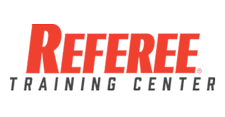Board of directors meetings for a typical officials association usually, in a nutshell, consist of an agenda, a review of the previous meeting’s minutes, a treasurer’s report, and any new and old business. Most officers within an association know the routine, it’s been used for years. But how can an association’s board of directors ensure that the meeting is efficient and productive?
Here are seven basics, aside from using Robert’s Rules of Order, that will assist toward an above-average meeting.
1. Be sure that the agenda set for the meeting is not overflowing with business items to discuss.
Give board members proper notice of the meeting and who will be presiding. If there is too much business to discuss, you probably won’t cover it all or the meeting will be excessively long. Set an agenda that is realistic and thorough, and circulate it in advance. That gives your officers a clear notion of what will be covered and how the meeting is to progress.
2. Start the meeting at the scheduled time.
Sounds simple, but it’s very important. Remember that board members have donated their time and don’t want to be in a meeting all night. If the board is large enough, establish sub-committees to cover agenda items and free up time in the meeting.
3. Once the meeting is started on time, stick to the agenda.
Board members should have prepared reports and comments for specific areas to be covered. Keep the meeting on track so that everyone knows what’s coming next. Allow for only one main motion pending at a time with secondary motions only while the main motion is on the floor. Refrain from allowing someone to veer off on a tangent with thoughts on a topic not even remotely related to the topic at hand. The president must be strong enough to diplomatically get things refocused fast.
4. Save valuable time by distributing the treasurer’s report or the membership report at least a week prior to the meeting by email.
An efficient president will make sure all regular reports are in his hands at least several days before the meeting so that he can attach them all to one email that board members can anticipate and concentrate on. That allows board members to review the reports and promptly discuss any questions in them prior to a vote for approval in the meeting.
5. Keep all members focused on the business at hand so that decisions can be made in a timely fashion without multiple explanations.
Be fair and courteous. Side conversations or socializing once the meeting has begun only causes delays. Participants who aren’t paying attention to the main order of business are not only discourteous but not prepared to vote. The president needs to be strong enough to demand that attention stays focused on agenda items.
6. Know the roles and responsibilities of officers on the board — president, vice-president, secretary, treasurer.
For example, the president should not take sides, but allow all to be heard equally during the meeting. He or she should also listen to the ideas and opinions of others on the board.
7. Be sure to conduct the meeting in a place without distractions.
An office or private room adjacent to a restaurant usually works best, and never in a restaurant. Reserve any socializing for immediately after the meeting is adjourned.





